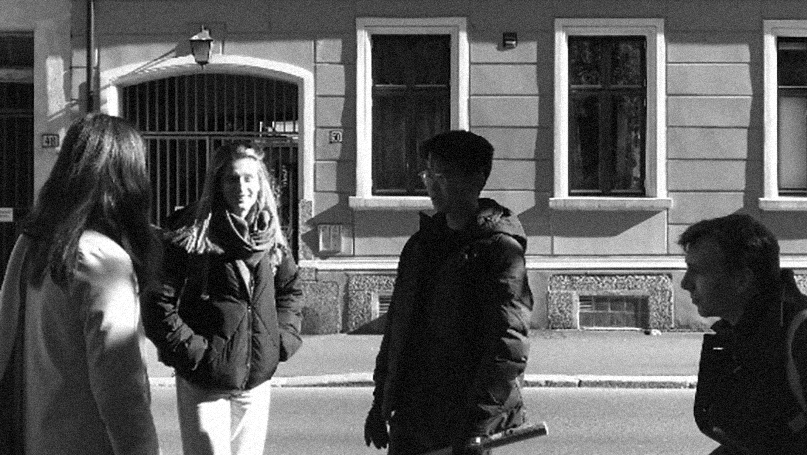PHOTOGRAPHED BY Tuca Vieira. The Paraisópolis favela next to its wealthy neighbour, Morumbi. São Paulo, 2004.
The capitalist society we live in today, is inherently pro-growth. Increase in wealth and growth of national economies is structurally coupled with increase in urban amenities and investment in new infrastructural developments. Since the neoliberal turn in the 1970’s globally, planning has been oriented towards competitiveness and growth. Within this planning framework, maximum land productivity is the priority. The negative effects of a pro-growth society are unjust socio-economic balance, environmental degradation, commodification, standardised pattern of consumption and production, social segregation, exclusion, gentrification, marginalisation and lack of democracy. Pro-growth mentality is a result of the neo-colonial approach to urbanisation and favours extractive practices from rural areas, the cost of which is paid by poorer populations (Savini et al., 2022).
On the opposite end of the spectrum lies degrowth which advocates for living within ecological limits by reducing production and consumption levels, enhancing socioeconomic justice and democratic governance. Instead of economic growth as the primary goal, environmental protection, social needs satisfaction, and vibrant local economy are the development goals. Degrowth prioritises local economic development over global economic growth. It stands for localism, self-sufficiency and autonomy. The concept of degrowth draws on studies from anthropology, sociology, psychology, political economy, philosophy and political ecology. Degrowth advocates seek solutions in the suburbs or outside main urban societies rather than within the urban when it comes to exploring transformation potentials. However, they regard urban planning entirely as a barrier to degrowth practices. Currently the dialogue between degrowth and urban planning is missing (Xue, 2022).
A post-growth society is similar to a degrowth society in the sense that both are based on decoupling urban planning from economic growth. The fundamental ideas that post-growth thinking encompasses is being aware of ecological limits and addressing social and ecological justice; and fostering a regenerative relation between cities and their ecosystems. This means public policies and planning frameworks need to integrate the notion of limiting growth. Furthermore, a change in ideology is required which shifts our society from measuring well-being, human prosperity and development in different ways than economical indicators such as GDP. Post-growth planning draws on principles from environmental economics, environmental geography, political ecology (Savini et al., 2022).
Urban growth and decline are part of the same process of urban economic development. Urban decline is a common phenomenon in cities of all highly industrialised countries. In the face of a globalised economy, where only capital cities and metropolitan regions serve as the locations for headquarters of multinational companies and big enterprises, the smaller cities and towns are unable to stand their ground, leading to economic slowdown and increase in social disparities. Some effects of decline are rising unemployment, rising public assistance or welfare service, (industry) plant-closing, population out-migration, social exclusion, physical decay and worsening living conditions (Lang, 2005).
According to product cycle theory each industrial product undergoes a life-cycle from the innovative stage to the growth or expansion stage, followed by the maturity stage and resulting in the stagnation/decline stage (Friedrichs, 1993). Globalisation and capitalism has a constant pressure on industrial firms by shortened product life cycles and stiffer competition. As contemporary cities are built around industries, the same logic applies to their overall urban development. To prolong its life cycle, the innovative and growth stage needs to be slowed down at the very beginning. This is why degrowth and post-growth strategies are urgent in the context of European cities at present.
Post-growth Urban Planning
Post-growth planning activism had already begun in the 1970’s and 80’s in the form of cycling advocacy, squatting, slow food production, street markets, cooperatives and self-managed public spaces, among others. Degrowth advocates for small-scale bottom up initiatives such as urban gardening, squatting, and co-housing as well (Xue, 2022). When either or both of these concepts are adopted in large scale urban planning, there are greater potentials like renewable energy production, facilitation of resource-saving lifestyles, generation of social capital through shared community facilities, community-led food initiatives, planning for regional food systems, and circular waste and water systems.
As Xue (2022) elaborates within the degrowth concept, the following methods coincide with post-growth ideology as well, i.e., to reduce human footprint and improve environmental sustainability. In the case of zoning, the rural/ urban/ industrial divide or the rural/ urban/ natural trichotomy needs to be abandoned (Savini et al., 2022). In the case of spatial organisation of human settlements, an overall high density urban structure will reduce travel distances and residential energy consumption; this means densifying existing built-up areas by using brownfields over undeveloped land, constructing high rise apartments instead of suburban single family houses, locating service facilities close to residences. To prevent urban sprawl, municipal zoning boards can allocate protected lands like nature reserves, farmlands, wildlife parks, etc. In the case of housing, post-growth planning could foster alternative forms of ownership, co-living, self-regulation, cooperative housing. Such practices are also rooted in care-giving and self-sufficiency. In the case of mobility, investing in maintenance and improvement of public transport infrastructure can reduce car dependency (Xue, 2022). In a reverse case as illustrated by Mattern (2018), neither the city nor the state has taken responsibility for fixing and repairing the New York City subway despite numerous economists declaring that infrastructure maintenance has positive effects on economic growth and productivity. In this case, economic growth refers not to capitalist growth but to a more resourceful and efficient distribution of state wealth as the maintenance costs will only compound over time and lead to a debt burden on the coming generations.
References
Xue, Jin. 2022. “Urban planning and degrowth: a missing dialogue”. Local Environment, 27 (4): 404-422. https://doi.org/10.1080/13549839.2020.1867840
Mattern, Shannon. 2018. “Maintenance and Care. A working guide to the repair of rust, dust, cracks, and corrupted code in our cities, our homes, and our social relations”. Places Journal. Accessed 11 Sep 2022. https://doi.org/10.22269/181120
Savini, Federico, Antonio Ferreira and Kim Carlotta von Schonfeld. 2022. “Uncoupling planning and economic growth”. Post-Growth Planning: Cities Beyond the Market Economy, 3-18. New York: Routledge https://doi.org/10.4324/9781003160984
Friedrichs, Jiirgen. 1993. “A Theory of Urban Decline: Economy, Demography and Political Elites.” Urban Studies 30 (6): 907–17. https://doi.org/10.1080/00420989320080851
Lang, Thilo. 2005. “Insights in the British debate about urban decline and urban regeneration”. Working Paper, Erkner, Leibniz-Institute for Regional Development and Structural Planning. http://hdl.handle.net/10419/228562





